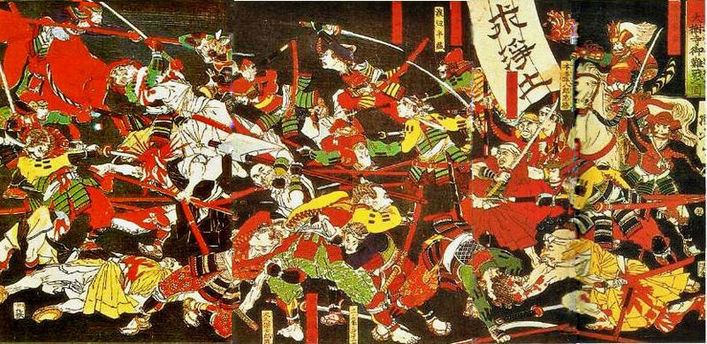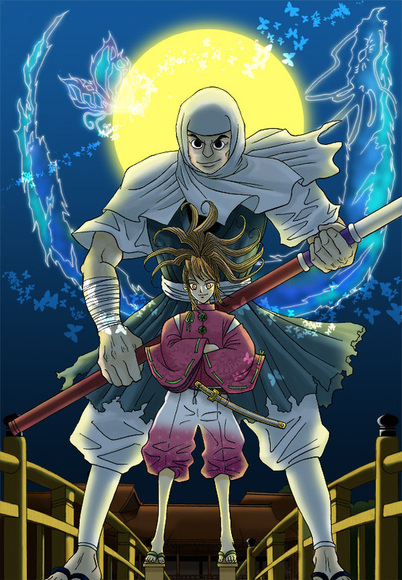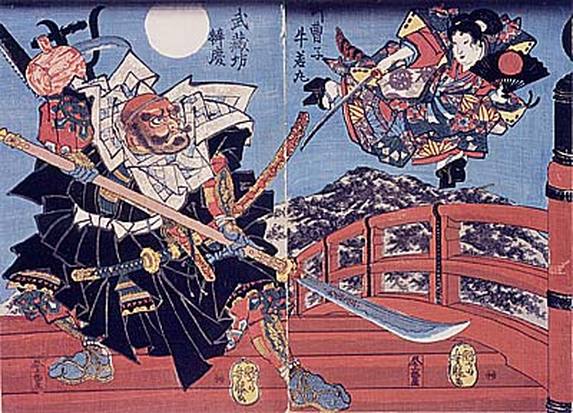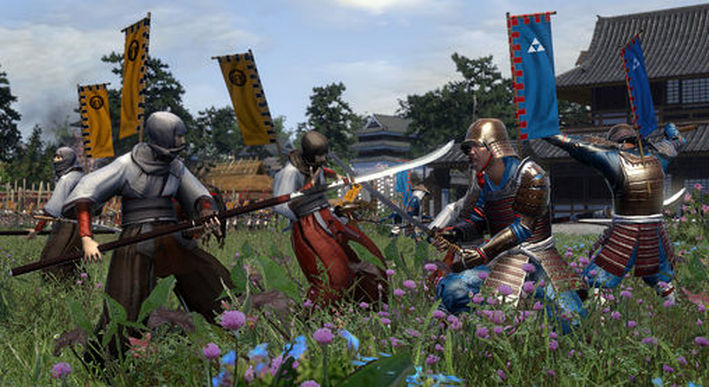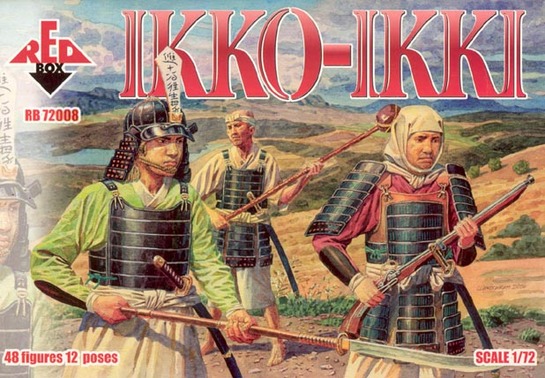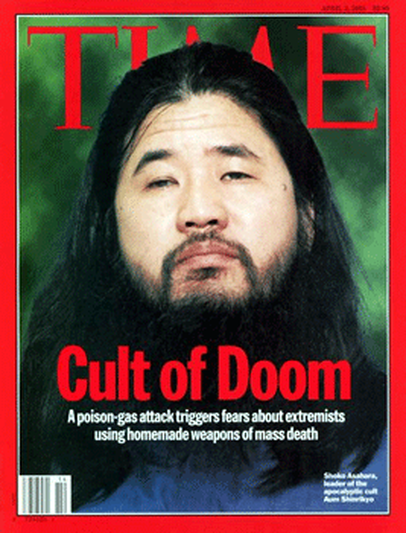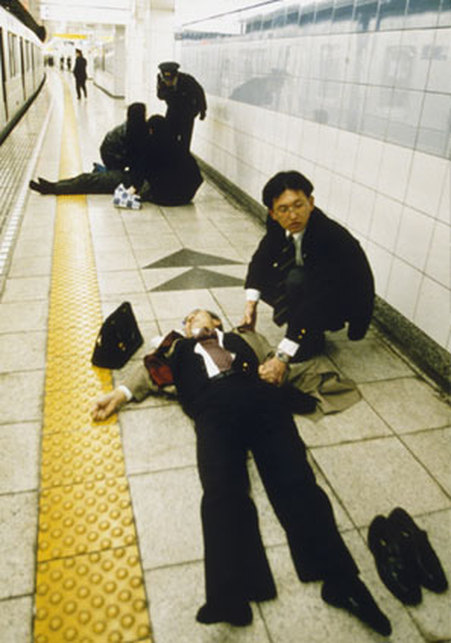Swords of Salvation: Religion and Violence in Japan
Ikkō-Ikki, the definitive holy warriors of medieval Japan, fighting hard against the forces of Tokugawa Ieyasu at the Battle of Azukizaka (1564)
OVERVIEW
The subject of religion and violence in Japan is deeply fascinating. At one time, holy warriors from various Buddhist sects constituted the largest standing armies in Japan, and they fought both with and against samurai in some of the most epic battles in Japanese history. Monastic warriors were eventually crushed, usually mercilessly, by the men seeking to build a unified Japanese state. However, the underlying connections between Buddhism, fighting culture, and warfare continued. Elements of Zen Buddhist traditions became an idealogical underpinning not only for medieval samurai, but also officers and soldiers fighting for the Empire of Japan in the early-modern and modern periods.
The connection between Japanese Buddhist culture and martial arts is so deeply intriguing that in popular culture it has taken on something of a life of its own. Archetypical representations of the spiritual warrior, particularly the swordsman, manifest in everything from the Jedi of Star Wars to the heroes of contemporary anime to hit video games. Sometimes these modern interpretations of holy warriors are inadvertently read back into our understanding of history. Part of our mission in this class is to explore and separate the constructed image of the Buddhist warrior from the historical reality.
Representations of the ferocious Buddhist fighter, whether genuine or imagined, have given way In the last 30 years to a new type of combatant: the Buddhist terrorist. The new religious movement Aum Shinrikyo drew from New Age spirituality, Buddhism, and even worldviews derived from comic book culture. Its members, led by Asahara Shoko, engaged in a string of atrocities in an attempt to catalyze the end of the world. In 1995, Aum members launched their deadliest attack, when they released sarin gas in the Tokyo subway system, leaving 13 dead and scores injured.
_______________________________________________________________________________
KEY QUESTIONS FOR OUR INVESTIGATION
Is Buddhism really a religion of pacifism? What precedents were there in the form of Buddhist holy warriors outside of Japan?
Are the conflicts which involved Japan's medieval Buddhist insititutions generally of a religious or political nature?
What aspects of Japanese Buddhism were believed to have been beneficial to the fighting man? What pop cultural characters and themes (both East and West) borrow from the image of Japan's medieval holy warriors?
How does specific weaponry evoke a romantic fighting spirit with respect to the spiritual soldier?
How did the Japanese government incorporate religion into its propaganda for soldiers fighting in the Second World War?
What was so compelling about the teachings of Aum Shinrikyo's founder Asahara that allowed his followers to justify mass murder?
_______________________________________________________________________________
Is Buddhism really a religion of pacifism? What precedents were there in the form of Buddhist holy warriors outside of Japan?
Are the conflicts which involved Japan's medieval Buddhist insititutions generally of a religious or political nature?
What aspects of Japanese Buddhism were believed to have been beneficial to the fighting man? What pop cultural characters and themes (both East and West) borrow from the image of Japan's medieval holy warriors?
How does specific weaponry evoke a romantic fighting spirit with respect to the spiritual soldier?
How did the Japanese government incorporate religion into its propaganda for soldiers fighting in the Second World War?
What was so compelling about the teachings of Aum Shinrikyo's founder Asahara that allowed his followers to justify mass murder?
_______________________________________________________________________________
IMAGES
A manga image of the most famous warrior monk, Benkei, standing behind Ushiwakamaru. This image was produced by the author Mikame Yukiyomi.
On Gojo bridge in Kyoto, the warrior monk Benkei finally meets a worthy adversary, Minamoto Yoshisune. After his surprise defeat in this combat, Benkei devotes his life to serving Yoshitsune. In this woodblock print, Benkei is shown carrying his seven weapons.
Ikkō-ikki (on the left) as represented in the video game Total War: Shogun Two. The fighting staff which is topped with a long blade is called a naginata. WIth some dubious accuracy, it is popularly known to be the weapon of choice for Japan's holy warriors.
Ikko-ikki toy soldiers. Note the presence of firearms. Historically, these soldiers were know to be particularly skilled with match-lock muskets.
Aum Shinrikyo's leader, Asahara Shoko. Asahara, who is legally blind, is currently awaiting his death sentence.
Victims laid out on the subway station platform in the terrible aftermath of the sarin gas attack on March 20th, 1995.
______________________________________________________________________________________________________________________________________________
CLASS FIELD TRIP TO OSAKA CASTLE (November 2011) VIDEO HERE
Reading Assignment for Nov. 8th:Holy War: Toward a Holistic Understanding By Brian Victoria
